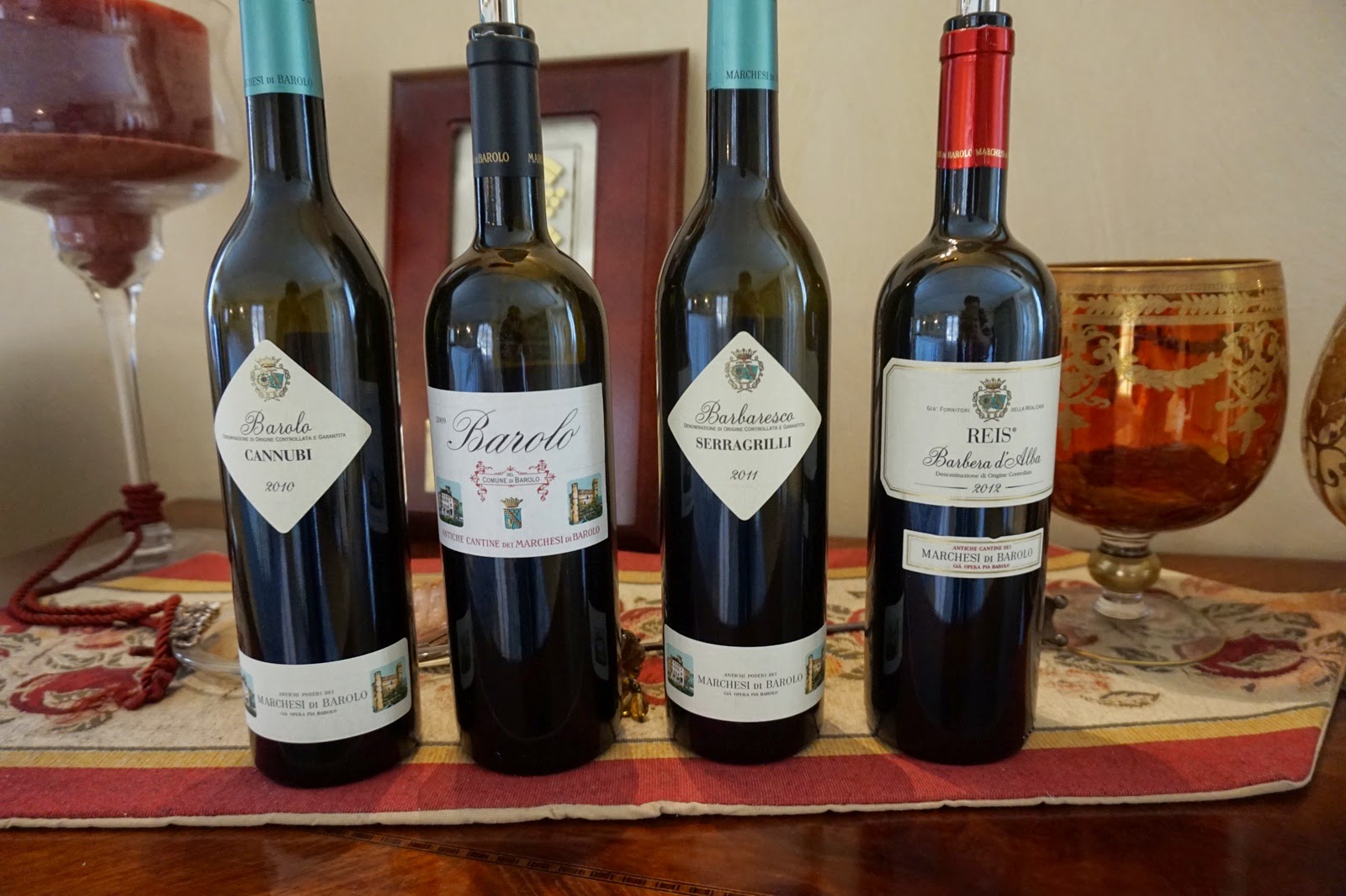Midway through our trip, we made a leisurely drive down the mountainous Langhe region in Piedmont to visit the town of Barolo, about 45 minutes south of where we stayed at Trezzo Tinella. It was a delightful scene as we went up the winding road leading up to this hilltop town, passing by the beautiful (and famous) Cannubi vineyards on our side.
Of course, Barolo needs no further introduction even for people with just the slightest knowledge of wine, for it being perhaps the most well-known wine region in Italy, producing the finest, most age-worthy wines made of 100% nebbiolo grapes.
We were to spend the whole day in the area visiting two different wineries with distinct characters and histories, but our first stop was Castello Falletti, the landmark of Barolo and was one of the few medieval castles still standing in the area. From here we were able to enjoy a panoramic view of the town in this sunny day, along with the beautiful landscape surrounding the town and some of the best vineyards on the slopes of the gentle hills.
At the basement of the castle housed the Enoteca Regionale del Barolo, essentially a regional wine shop tasked with promoting (and selling) the best local wines. If you are a winelover and could only afford the time to go to one place in the area only, this would be your destination.
Our first winery destination was Marchesi di Barolo, one of the more established and legendary wineries in the region. Once owned by the Falletti clan (yes, who also built and owned the castle we just visited), the winery was bought by a winemaker Pietro Abbona in 1920s and since then remained a family business, now in its 5th generation. Of the wineries we visited during this trip, Marchesi di Barolo was the biggest, using grapes from over 270 acres of vineyards over a vast area in the region, with a million bottles produced each year.
We began with the guided tour of their facilities, starting with their production and cellar facilities, including 5 large oak barrels dating back to the mid-1800s which have recently been restored and now used for aging some of their Barolo wines. They also used the smaller French barriques (which was slightly toasted) for their Barolo wines partially, believing that the smokey, oaky characteristics will bring out the best of the nebbiolo grapes through aging. Most of the estate-owned land was in the proximity, including the signficant parcels of vineyards in Cannubi and Sarmassa crus, and more in the nearby regions in Langhe, some as far as near Alba where they made their Barbaresco wine.
On one end of their underground cellar was a "library" with an impressive collection of wines from all vintages sorted chronologically, with the oldest being 1859. A few other memorabilia was on display too, giving us a glimpse of the winery's long and storied history.
At the end of the visit, we were led to the foresteria upstairs, where we enjoyed a wonderful lunch of traditional Piedmontese cuisine with wine pairings. This is a perfect place to taste some of their wines in a comfortable setting. We felt like we were treated as VIPs as we were the only group of customers on that day and the staff was super friendly. In the middle of the meal, family owners Anna and her daughter Valentina dropped by our table to say hi and we had a lovely chat.
The highlight of the meal was the filetto di fassone al Barolo - fillet of veal braised in Barolo wine. We were told that each kilo of meat was slow-cooked with 2 liters of the fine Barolo wine, and as a result, the meat was super tender and infused with subtle flavor from that of the wine. Of course we didn't miss the opportunity to sample more of the white truffles, and both the egg cocotte and risotto courses - each served with plenty of shaved white truffle flakes on top - didn't disappoint.
The winery produces a wide portfolio of wines and we were able to try a few of the typical ones, starting with the Barbera which was more suitable for everyday drinking, moving on to an approachable Barbaresco then their signature Barolos. My favorite was one of their single-cru Barolo production - the Cannubi - which showed elegance and finesse not common from a large-scale winery like Machesi di Barolo. Not to mention we liked the design of the narrow, tall bottles for their single-cru series. The Barolo del Commune de Barolo - their "generic" bland using grapes from various areas within the Barolo region - represents great value for money also.
We finished with a classic Moscato d'Asti, characterized by a hint of floral fragrance on the nose and pear on the palate, and was well-balanced without overbearingly sweet. It certainly went well with the dessert served in that afternoon, which was a rich chocolate cake with moscato jelly - made with the very wine we were drinking.
Marchesi di Barolo: www.marchesibarolo.com
(This is the part of the Journey to Piedmont series, a writing
project capturing our recent travel experiences to the region)
Sunday, December 7, 2014
Day in Barolo, plus another wine and truffle lunch
Tagged as:
Barolo
,
Cannubi
,
Enoteca
,
Italy
,
Journey to Piedmont
,
lunch
,
Marchesi di Barolo
,
Piedmont
,
sightseeing
,
Tour
,
travel
,
Truffles
,
wine
,
Wine and Dine
,
Wine Cellar
,
Winery
Subscribe to:
Post Comments
(
Atom
)














No comments :
Post a Comment